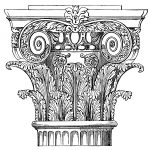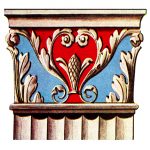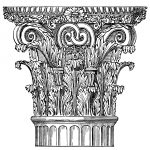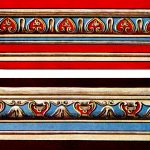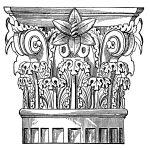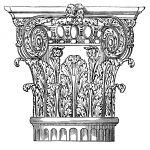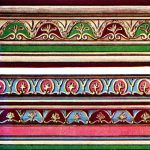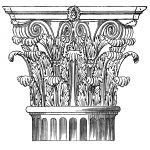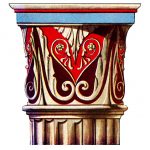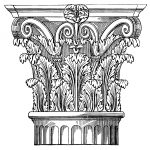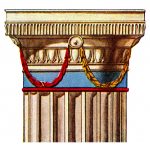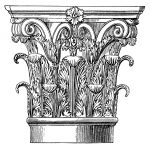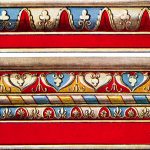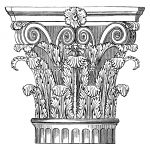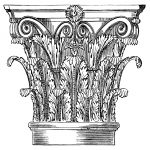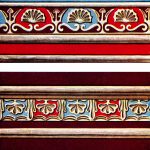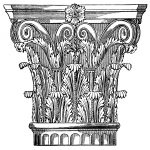
Corinthian Capitals
On this page are eighteen color and black and white images displaying Corinthian Capitals and cornices from Rome. They come from the books Colored Ornament of all Historical Styles by Alexander Speltz and The Grammar of Ornament by Owen Jones. Corinthian Capitals are the most elaborate of the three classical orders of architecture (Doric, Ionic, and Corinthian). They are characterized by their ornate bell-shaped form, which is decorated with two rows of acanthus leaves, volutes (spiral scrolls), and an abacus (a flat slab on top). First developed in Greece in the 5th century BC, they became much more popular in the Roman world, where they were often used in temples, palaces, and other important buildings.Cornices are horizontal moldings that project from the top of a wall or entablature (the beam supported by columns in classical architecture). They can be simple or elaborate, and they often serve to decorate the building and to protect the wall from the elements. If you are enjoying these examples of Corinthian capitals and cornices, you might also like the galleries with Ancient Roman Artwork and Roman Statues. Have fun!
More on Corinthian Capitals
 |
 |
 |
 |
Related


